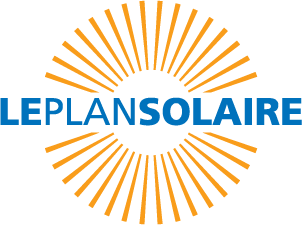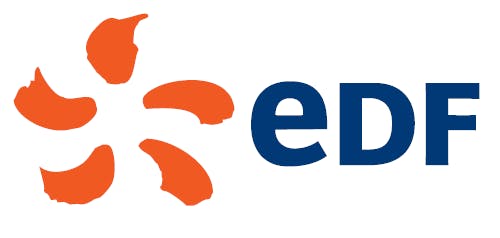EDF is also preparing for redeployments following final shutdowns, aiming to become the European leader in generation asset decommissioning, and is developing the circular economy.
- Supporting energy transition by reducing the carbon footprint requires targeted development of electricity production projects using gas to meet flexibility and energy transition requirements.
- EDF has committed itself to ending the Group’s coal-fired electricity generation by 2030. In France, pursuant to the SNBC national low carbon strategy(1), the government has committed to halting coal-based electricity production by the end of 2022. EDF is also conducting a sustained innovation policy by investing in bioenergy and innovative carbon capture technologies.
The electricity produced by EDF group is one of the lowest-carbon in the world.
To maintain its leadership, in 2020 EDF made new greenhouse gas reduction commitments for the period until 2030; these have been validated by the
Science Based Targets Initiatives organisation as being ahead of the COP21 2° C goal. For the first time, EDF group has set itself targets covering not only its direct emissions but also its indirect emissions, in order to be on track to achieve carbon neutrality for its entire carbon footprint by 2050. By 2030, EDF aims to reduce its direct emissions by 50% compared to the 2017 level of emissions and to reduce its scope 3 emissions by 28% compared to the 2019 level of emissions (see section 3.1 “Carbon neutrality and the climate”).
1.3.2.3 Arising as a worldwide stakeholder in the energy transition
To deal with the challenges of demographics, urbanisation and air pollution, many countries are looking for solutions that can improve the situation. EDF, which operates on four continents, supports this energy transition by exporting its expertise in nuclear power, renewable energies and energy services.
Internationally, there is considerable scope for innovation. EDF is seeking to triple its business (compared to 2015) through targeted development of its renewable energy, nuclear, and gas production assets, thus contributing to countries’ energy transition.
By 2030, EDF group’s goal is that of no longer having any coal-fired assets anywhere in the world, whilst also making a significant contribution to the development of renewable installed capacity, with a target of between 25 and 30GW net of renewables, including 1.5-2GW of net installed capacity in hydropower(2).
In terms of new business lines, EDF is aiming to have a portfolio of 1 million off-grid kits by 2030 and is pursuing the development of new markets such as micro grids, smart grids, storage, hydrogen, mobility, smart cities, etc., as well as further strengthening its positions in energy efficiency services, grids, and engineering services.
From a geographical point of view, EDF is seeking to strengthen its position in Europe, particularly in core countries (the United Kingdom, Italy, and Belgium), as well as to consolidate its position in China and North America. EDF is aiming to become a benchmark player in a limited number of priority countries in
South America, Asia, Africa, and the Middle East, by means of a significant
multi-business presence, thus providing coordinated support for energy transition in these target countries.
EDF is investing massively in energy transition, with some €15.5 billion of investments each year in low-carbon fields: nuclear power, hydropower, solar power, wind power, grids distributing low-carbon electricity, energy efficiency services, smart meters, hydrogen, and more; the financial performance of these investments is also a vital consideration. These fields accounted for some 94% of the Group’s gross operating investments in 2020. Three-quarters of these are located in France and could constitute one of the drivers for post-Covid recovery.
In all the countries in which it operates, EDF group is implementing a strategy to adapt all its activities to the impacts of climate change. It aims at making its existing facilities more resilient to increasingly frequent extreme weather events (heat waves, droughts, storms, floods, etc.). On the other hand, the EDF group incorporates
long-term climate change (average temperatures, sea levels, etc.) into the design of new facilities, particularly those with a lifespan of over 40 years, such as hydroelectric and nuclear plants (see section 3.1.2 “Climate change adaptation strategy”).
1.3.2.4 Strategic priorities backed up by four plans plus a transformation programme, in line with the Group’s raison d’être and business model
- These goals are pursued through the four following plans and a strategic work programme(3) :

EDF’s electric mobility plan, launched in October 2018, aims to secure a 30% market share in the supply of electricity for electric vehicle in the Group’s four major European markets: France, the UK, Italy and Belgium. The EDF group aims at rolling out 150,000 charging points and at operating 10,000 smart charging points by 2023. For its own fleet of light commercial vehicles, EDF is also rolling out the EV100(4) programme and gradually converting its ICE vehicles into electric vehicles; the target is to be 100% complete by 2030.

With the storage Plan, launched in 2018, EDF provides for the development of 10GW of new storage facilities in the world by 2035, increasing the Group’s storage capacity by then to 15GW. EDF is aiming to develop a portfolio of 1 million off-grid kits by 2030. Storage is a key factor in stabilising network frequency, encouraging the inclusion of renewable energy, and managing microgrids in non-inter connected areas. It will be developed by using pumped energy transfer stations and
giga-batteries.

Through its solar plan, launched in 2017, EDF aspires to become the leader in solar photovoltaic energy in France with a 30% market share(5) of the sector by 2035.

With the excell plan, announced in December 2019 and launched in spring 2020, EDF is laying the groundwork for the French nuclear industry to recover the highest standards of diligence, quality, and excellence, required for the successful completion of nuclear projects. This is a key challenge: as a low-carbon source of energy, nuclear power has a significant role to play in the fight against climate change. In 2020,
10 transformation projects were carried out – a practical implementation of the commitments made in December 2019. They also opened the way for 25 new commitments to be honoured by mid-2021(1) (see also section 1.4.1.1.1
“The excell plan”).
(1) Introduced by the French Energy Transition Act promoting green growth (Loi de Transition Energétique pour la Croissance Verte, LTECV), the National Low Carbon Strategy (Stratégie Nationale Bas-Carbone, SNBC) constitutes France’s road map for combating climate change. It provides guidelines for implementing the transition to a low-carbon, circular, sustainable economy in all areas of business. It also defines a trajectory for cutting greenhouse gas emissions through to 2050 and establishes short to medium-term goals: carbon budgets. Its aim is two fold: to achieve carbon neutrality by 2050, and to cut the carbon footprint of French people’s consumption. National and local public-sector decision-makers must take the SNBC into account.
(2) Excluding priority countries in Europe: France, Italy, the UK, and Belgium.
(3) The strategic work programme is composed of some twenty strategic projects managed at the
Executive Committee level, which concretely implement each of the three strategic priorities.
(4) EV100 is a global initiative originating in New York at Climate Week NYC in September 2017. It aims to bring together multinationals committed to the development of electric mobility – and making it widespread by 2030.
(5) Market share expressed in terms of gross installed capacity.
